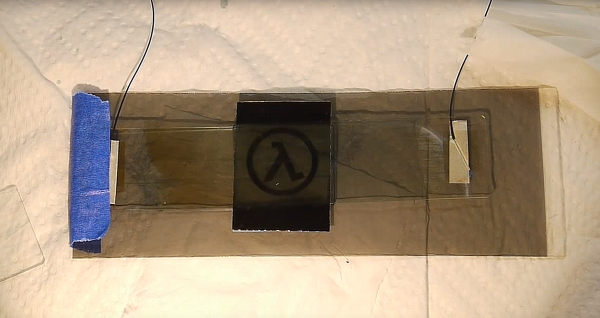Transparent, conductive glass is cool stuff and enables LCD panels and more. But the commercial method involves sputtering indium-tin oxide, which means a high vacuum and some high voltages, which is doable, but not exactly hacker-friendly. [Simplifier] has documented an alternative procedure that uses nothing more than a camp-stove hotplate and an airbrush. And some chemistry.
Make no mistake, this is definitely do-it-outside chemistry. The mixture that [Simplifier] has settled on includes stannous (tin) chloride and ammonium bifluoride in solution. This is sprayed uniformly onto the heated glass (350-400° C), and after it’s evaporated there is a thin, strong, and transparent layer of fluorine-doped tin oxide. [Simplifier] reports resistances down in the single-digit Ohms per square, which is pretty awesome. [Simplifier] didn’t get the mix down perfectly on the first pass, of course, so it’s also interesting to read up on the intermediate steps.
Our thoughts immediately spring to masking sections of glass off and building DIY transparent circuits and panels, but we suspect that we’re getting ahead of ourselves. Still, this is an incredible early result, and we hope that it opens up the way to crazy transparent-conductive applications. What would you do if you could make glass circuits? Well, now you can, and it doesn’t look too hard.
Continue reading “DIY Conductive Glass You Could Actually Make”













